New evidence revises a long-held belief about James Monroe’s home

WHILE VISITORS TO THE homes of Thomas Jefferson and George Washington are escorted through fine mansions, tourists coming to the Albemarle County, Virginia, home of President James Monroe see a cottage. The modest clapboard house, located on the bucolic estate Monroe called Highland, was billed for more than a century as his family’s main residence for much of his presidency.
To some visitors, the cottage may well have seemed commonplace, and a bit small for the home of a prominent family, headed by a man who stood roughly six feet tall. But for decades, few questions arose. Perhaps that was because Monroe—a Founding Father who fought in the Revolutionary War, a statesman who helped negotiate the Louisiana Purchase, and an enormously popular two-term president—is often perceived as a man of humble origins. His father had been apprenticed to a carpenter, and Monroe has been described as a woodworker’s son and “farm boy” on a “second-tier Virginia farm.” A nineteenth-century etching of Monroe’s boyhood home shows what, to modern eyes, looks like a rough-hewn cabin, reinforcing the impression.
Currently, though, Highland’s cottage is turning out to be a lesson in how a small misunderstanding—or deception— becomes a big one. “Much of colonial history—and the history of buildings—is like plaque building up in your arteries. It just hardens and hardens,” says architectural historian Carl Lounsbury, who worked for decades at Virginia’s Colonial Williamsburg, the eighteenth-century living-history museum. “And sometimes you’ve got to scrape it all away.”
Bu hikaye Archaeology dergisinin July/August 2017 sayısından alınmıştır.
Start your 7-day Magzter GOLD free trial to access thousands of curated premium stories, and 8,500+ magazines and newspapers.
Already a subscriber ? Giriş Yap
Bu hikaye Archaeology dergisinin July/August 2017 sayısından alınmıştır.
Start your 7-day Magzter GOLD free trial to access thousands of curated premium stories, and 8,500+ magazines and newspapers.
Already a subscriber? Giriş Yap
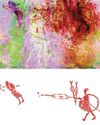
A Very Close Encounter
New research has shown that human figures painted in red on a rock art panel in central Montana depict individuals engaged in a life-or-death encounter during an especially fraught historical moment.
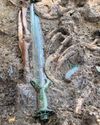
A Sword for the Ages
A zigzag pattern, now tinged with the green-blue patina of oxidized metal, adorns the octagonal hilt of a rare sword dating to the Middle Bronze Age in Germany (1600-1200 B.C.) that was recently excavated in the Bavarian town of Nördlingen.
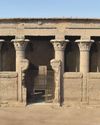
Ancient Egyptian Astrology
For centuries, layers of soot have coated the ceilings and columns in the entrance hall of Egypt's Temple of Esna. Now, an Egyptian-German team of researchers, led by Hisham El-Leithy of the Egyptian Ministry of Tourism and Antiquities and Christian Leitz of the University of Tübingen, is restoring the temple's vibrant painted reliefs to their original brilliance.
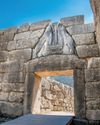
BRONZE AGE POWER PLAYERS
How Hittite kings forged diplomatic ties with a shadowy Greek city-state
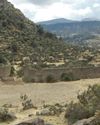
RITES OF REBELLION
Archaeologists unearth evidence of a 500-year-old resistance movement high in the Andes

Secrets of Egypt's Golden Boy
CT scans offer researchers a virtual look deep inside a mummy's coffin

When Lions Were King
Across the ancient world, people adopted the big cats as sacred symbols of power and protection

UKRAINE'S LOST CAPITAL
In 1708, Peter the Great destroyed Baturyn, a bastion of Cossack independence and culture

LAPAKAHI VILLAGE, HAWAII
Standing beside a cove on the northwest coast of the island of Hawaii, the fishing village of Lapakahi, which is surrounded by black lava stone walls, was once home to generations of fishers and farmers known throughout the archipelago for their mastery of la'au lapa'au, or the practice of traditional Hawaiian medicine. \"

A MORE COMFORTABLE RIDE
Although the date is much debated, most scholars believe people 5,000 years ago. For thousands of years after that, they did so without saddles. \"In comparison with horse riding, the development of saddles began relatively late, when riders began to care more about comfort and safety in addition to the horse's health,\" says University of Zurich archaeologist Patrick Wertmann.